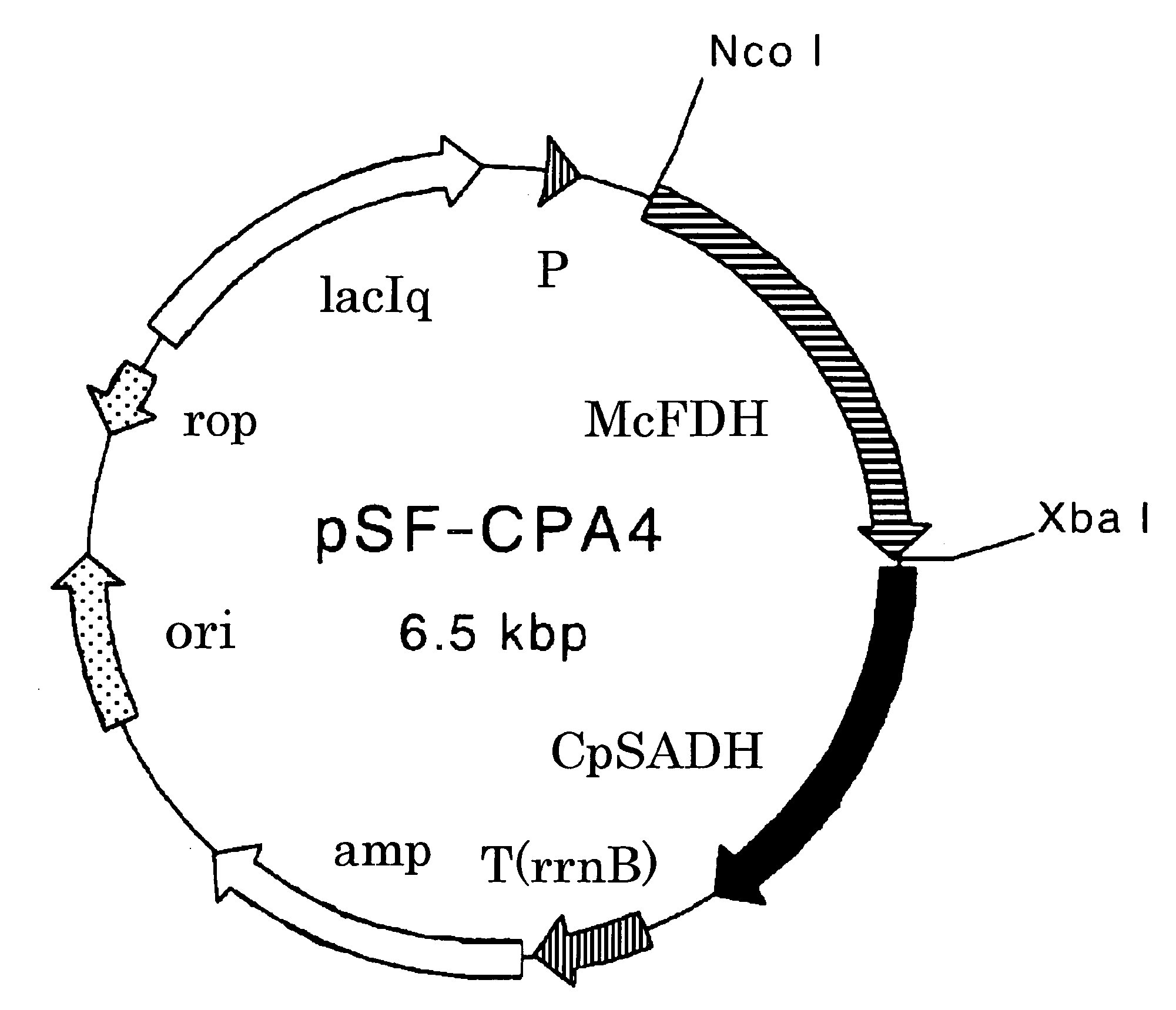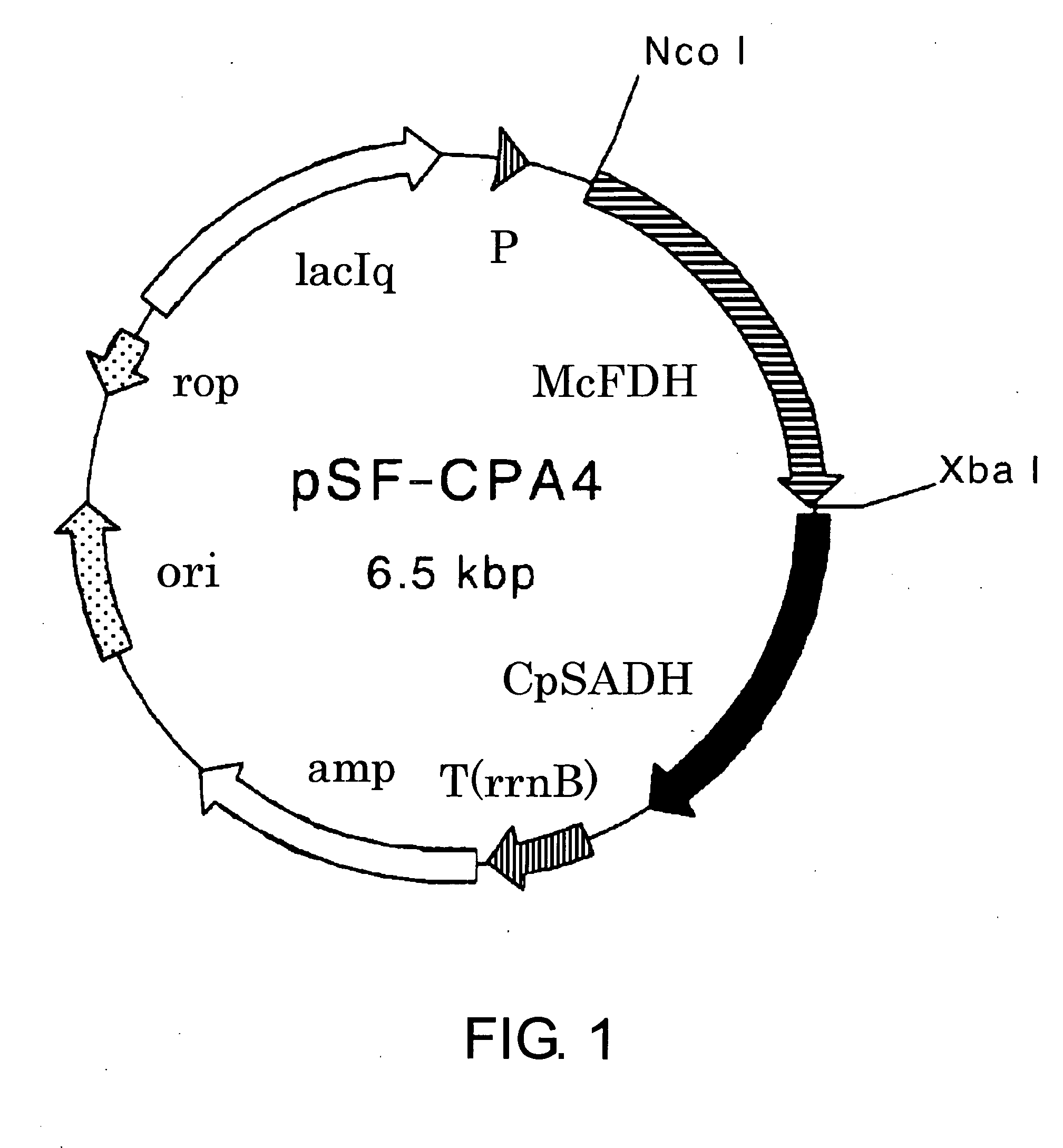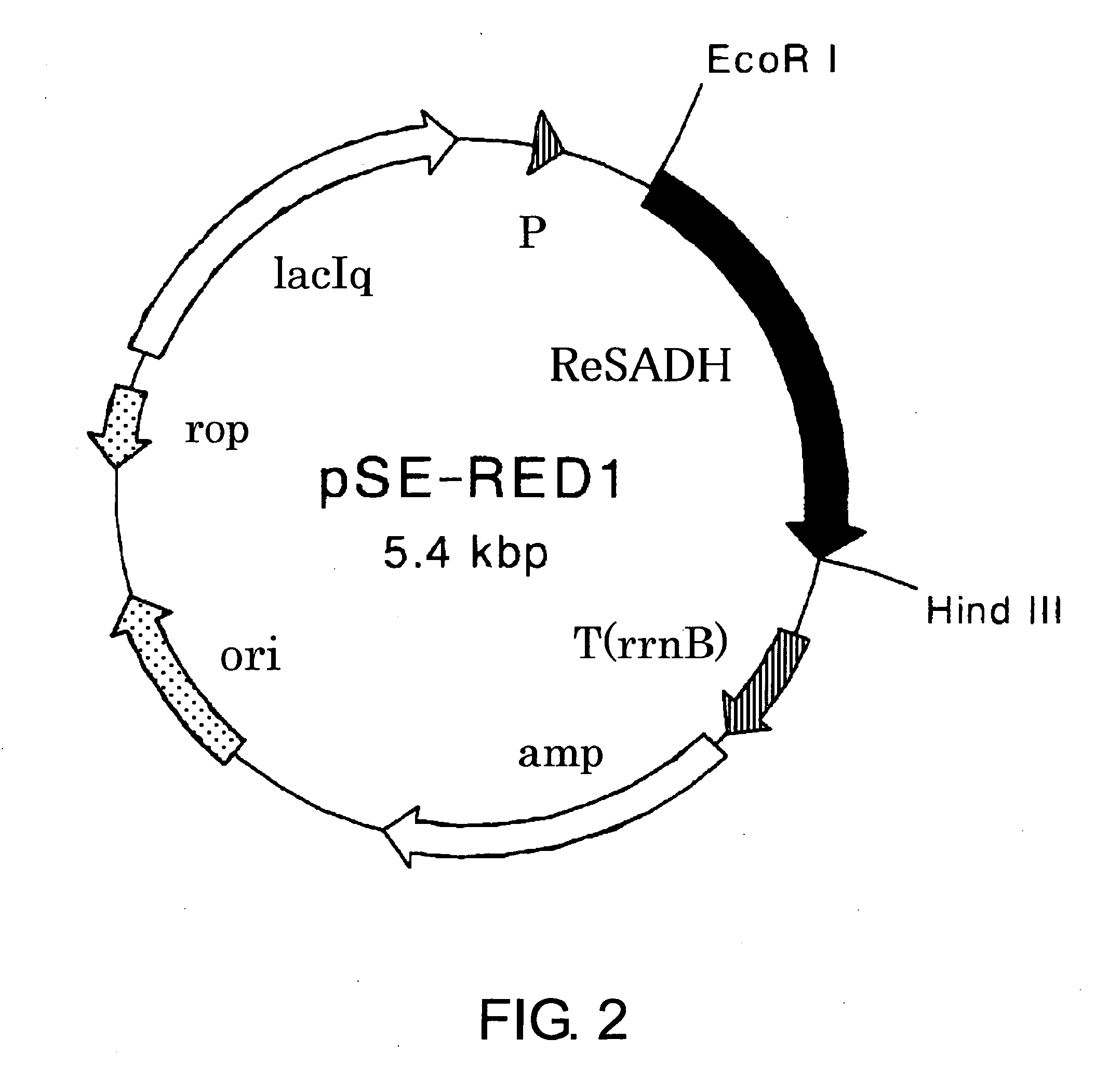Process for Production of Optically Active Alcohol
a technology of optically active alcohol and production process, which is applied in the direction of oxidoreductases, dna/rna fragmentation, fertilization, etc., can solve the problems of high cost of reducing agents, low optical purity of 1>, 2> and 3>, and achieve high purity and good yield
- Summary
- Abstract
- Description
- Claims
- Application Information
AI Technical Summary
Benefits of technology
Problems solved by technology
Method used
Image
Examples
example 1
Construction of Plasmid pSF-CPA4 Coexpressing Alcohol Dehydrogenase CpSADH Gene Derived from Candida parapsilosis and Formate Dehydrogenase McFDH Gene Derived from Mycobacterium vaccae
[0153]A sense primer CPA-ATG5 (SEQ ID NO: 19) and an antisense primer CPA-TAA5 (SEQ ID NO: 20) were synthesized for cloning based on the nucleotide sequence (Accession No. E09871) described in Japanese Patent No. 3574682.
SEQ ID NO: 19GTGGAATTCTATAATGTCAATTCCATCAAGCCAGSEQ ID NO: 20CTGAAGCTTATTATGGATTAAAAACAACACGACCTTCATAAGC
[0154]50 μL of a mixture containing 10 pmol each of the primers CPA-ATG5 and CPA-TAA5, 10 pmol of dNTP, 10 pmol of the plasmid pSE-CPA1 described in Biosci. Biotechnol. Biochem., 66, 481-483 (2002), and 1.25 U of Pfu Turbo DNA polymerase (STRATAGENE) was subjected to 30 PCR cycles of denaturation at 95° C. for 30 seconds, annealing at 50° C. for 1 minute, and extension at 72° C. for 2 minutes 30 seconds using GeneAmp PCR System 2400, thereby obtaining a specific amplification product...
example 2
Enzyme Activity of the Transformant Transformed with Plasmid Coexpressing Alcohol Dehydrogenase CpSADH Derived from Candida parapsilosis and Formate Dehydrogenase McFDH Derived from Mycobacterium vaccae
[0157]A cell-free extract was prepared according to the above-described method using the Escherichia coli HB101 strain transformed with pSF-CPA4 obtained in Example 1. The enzyme activity was measured according to the above-described method. The specific activities of CpSADH and McFDH were 5.96 U / mg protein and 0.474 U / mg protein, respectively.
example 3
Preparation of Chromosomal DNA from Rhodococcus erythropolis
[0158]Rhodococcus erythropolis DSM 743 strain was cultured in a broth medium, and bacterial cells were prepared. Preparation of chromosomal DNA from the bacterial cells was performed by the method described in Nucleic Acids Res., 8, 4321 (1980).
PUM
 Login to View More
Login to View More Abstract
Description
Claims
Application Information
 Login to View More
Login to View More - R&D
- Intellectual Property
- Life Sciences
- Materials
- Tech Scout
- Unparalleled Data Quality
- Higher Quality Content
- 60% Fewer Hallucinations
Browse by: Latest US Patents, China's latest patents, Technical Efficacy Thesaurus, Application Domain, Technology Topic, Popular Technical Reports.
© 2025 PatSnap. All rights reserved.Legal|Privacy policy|Modern Slavery Act Transparency Statement|Sitemap|About US| Contact US: help@patsnap.com



